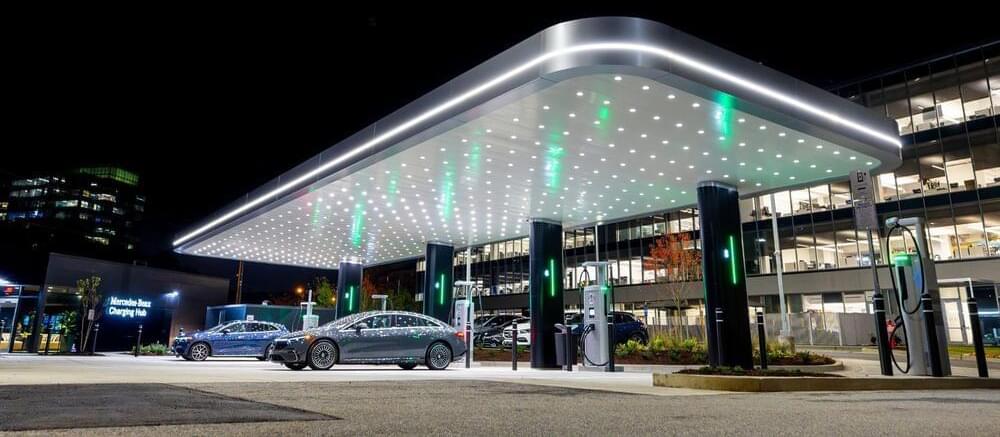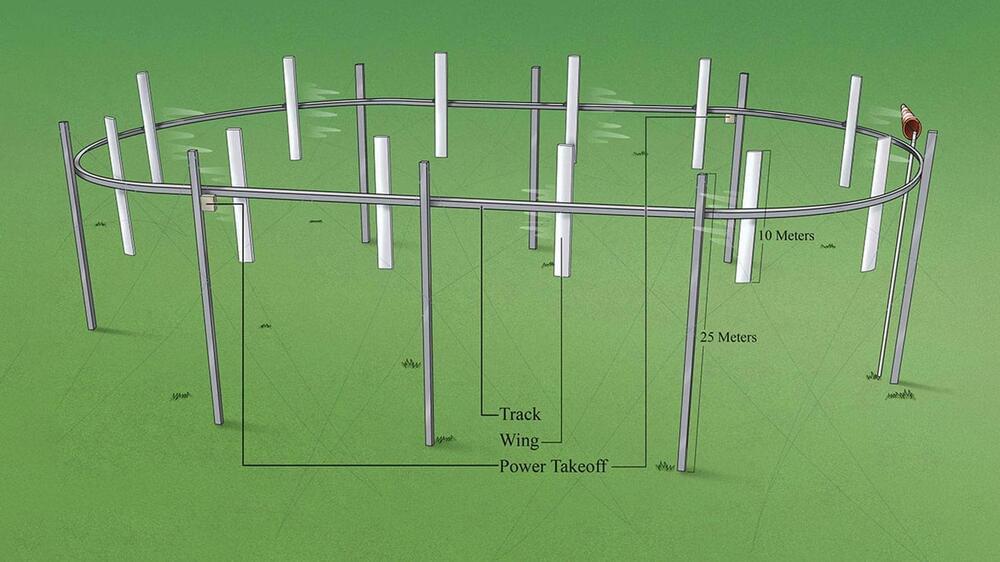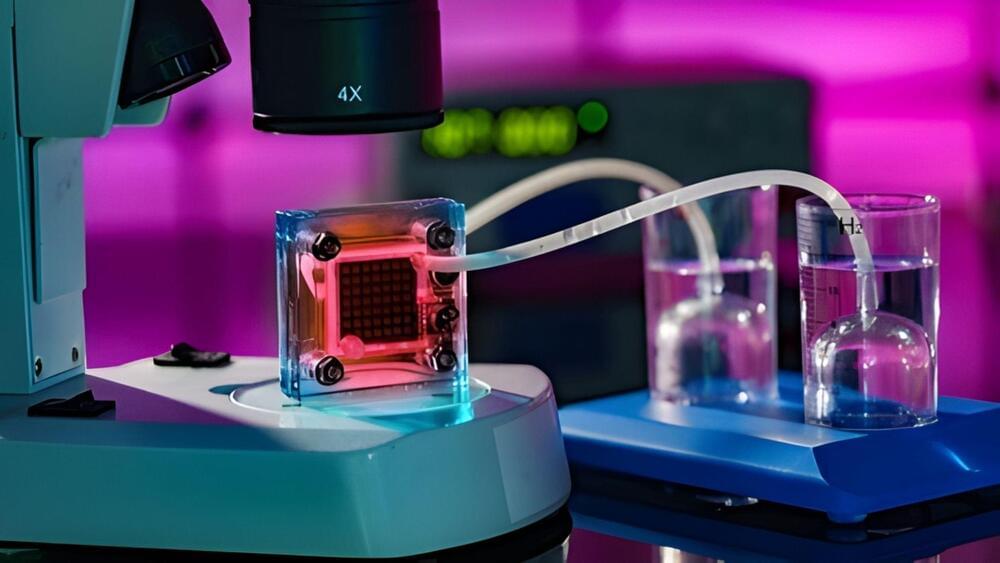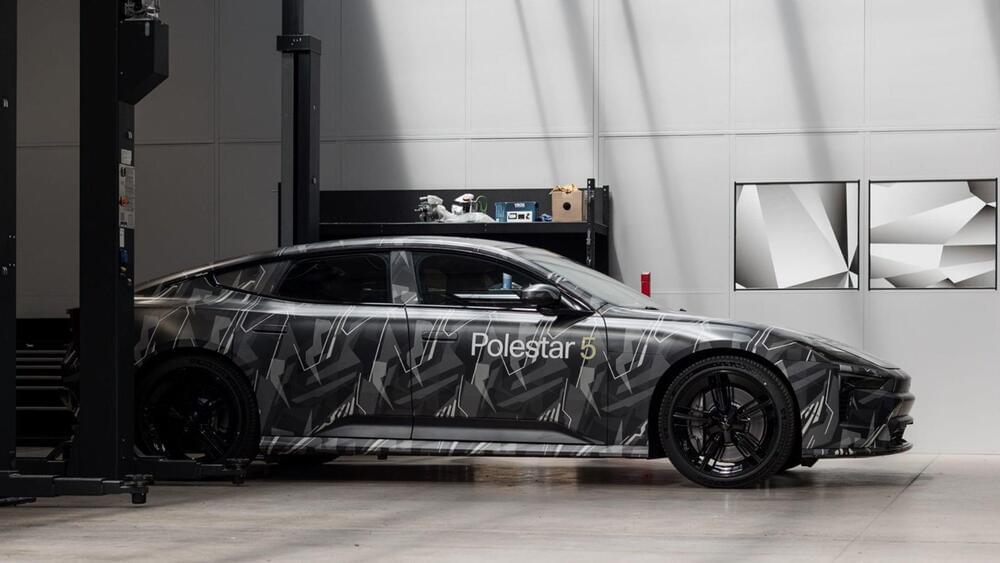The unfrozen water-filled channels that crisscross multicrystal ice help feed ice growth, which can lead to fractures in materials such as asphalt and cement.



Eleven months after sharing plans to develop and implement a new series of EV charging hubs across North America, Mercedes-Benz, with the help of ChargePoint, has opened its very first location in the US, complete with a driver lounge and powered using 100% renewable energy.
This past January, Mercedes-Benz announced plans for the new network of fast charging hubs during a press conference at CES alongside its new partner, ChargePoint.
At the time, we learned that both MN8 Energy and Mercedes-Benz would finance and jointly operate the network of over 400 planned charging hubs, becoming home to over 2,500 ChargePoint DC fast charging piles across the US and Canada.

ChargePoint’s Express Plus Power Link 2000 DC charging system offers charging speed twice as fast as Tesla’s V3 Supercharger.
Mercedes Benz.
The initiative is part of Mercedes-Benz HPC’s first Charging Hub in North America, located at Mercedes-Benz USA Headquarters in Sandy Springs, Georgia. The 500 kW capacity, serviced by ChargePoint’s Express Plus Power Link 2000 DC charging system, makes it twice as fast as Tesla’s V3 Supercharger.

It’s worth noting that Airloom’s new wind turbine can be configured vertically or horizontally and that it can be deployed offshore as well as on land.
“For decades, the wind industry has lowered the cost of energy production by scaling ever larger turbines. Although this has been extremely successful in driving down overall costs, the approach now faces challenges in terms of both siting and cost of materials,” said Carmichael Roberts of Breakthrough Energy Ventures in a press release. “Airloom’s unique approach can solve both these problems, opening new market opportunities for wind energy that will further drive down costs. We look forward to Neal’s leadership in bringing this revolutionary technology into the market.”
With small-scale prototypes already up and running, the company plans to use its seed funding for research and development of the Airloom wind energy test device, which is designed to produce 50 kilowatts (kW) of electricity. Future systems are expected to be megawatt-scale and deployed hundreds of megawatts at a time in utility-scale wind farms.


Researchers at SLAC National Accelerator Lab, Stanford, and Toyota are revolutionizing hydrogen fuel cells by substituting costly platinum group metals with more economical silver.
Govind Oza/iStock.
The breakthrough involves a radical shift in the catalyst composition, traditionally reliant on expensive platinum group metals (PGM), according to an SLAC release.
A radical redesign of commercial aircraft, called the flying-V plane, could increase fuel efficiency by 20%, greatly reducing emissions.

A team of George Mason University scientists has received a federal grant of more than $13 million to work with the Department of the Navy to study and better understand increased solar activity that could potentially cause an “internet apocalypse” disrupting all electronic communications on Earth, including satellite communications.
Research from the grant, which will total $13.6 million in expenditures over five years, will be done in collaboration with the Naval Research Laboratory (NRL), and will include state-of-the-art data mining, analysis, and scientific modeling, among other endeavors, led by Mason faculty, students and staff. Under the terms of the contract, Mason provides scientific support for a broad range of astronomy-related activities that are of interest to the U.S. Navy and the nation at large.
“The main focus is on solar activity and the way it can impact systems on Earth,” said principal investigator Peter A. Becker, a professor in the Department of Physics and Astronomy within the College of Science. “This is especially important to the Navy—and more broadly the Department of Defense—because high-energy outbursts from the sun can have a strong negative impact on earthly radio and internet communications. And they can also have a detrimental effect on navigation systems and energy grids on Earth.”
It started with a simple experiment that was all the rage in the early 20th century. And as is usually the case, simple experiments often go on to change the world, leading Einstein himself to open the revolutionary door to the quantum world.
Here’s the setup. You take a piece of metal. You shine a light on it. You wait for the electrons in the metal to get enough energy from the light that they pop off the surface and go flying out. You point some electron-detector at the metal to measure the number and energy of the electrons.
Done.

Extreme fast charging (XFC) battery technology
StoreDot is a leader in extreme fast charging (XFC) battery technology, which uses silicon-dominant chemistries to enable rapid charging without compromising energy density or safety. The company has successfully validated its “100in5” XFC cell, which can deliver 100 miles of range in five minutes, at an independent battery lab in Israel. The cell has also shown superior performance compared to other EV batteries.